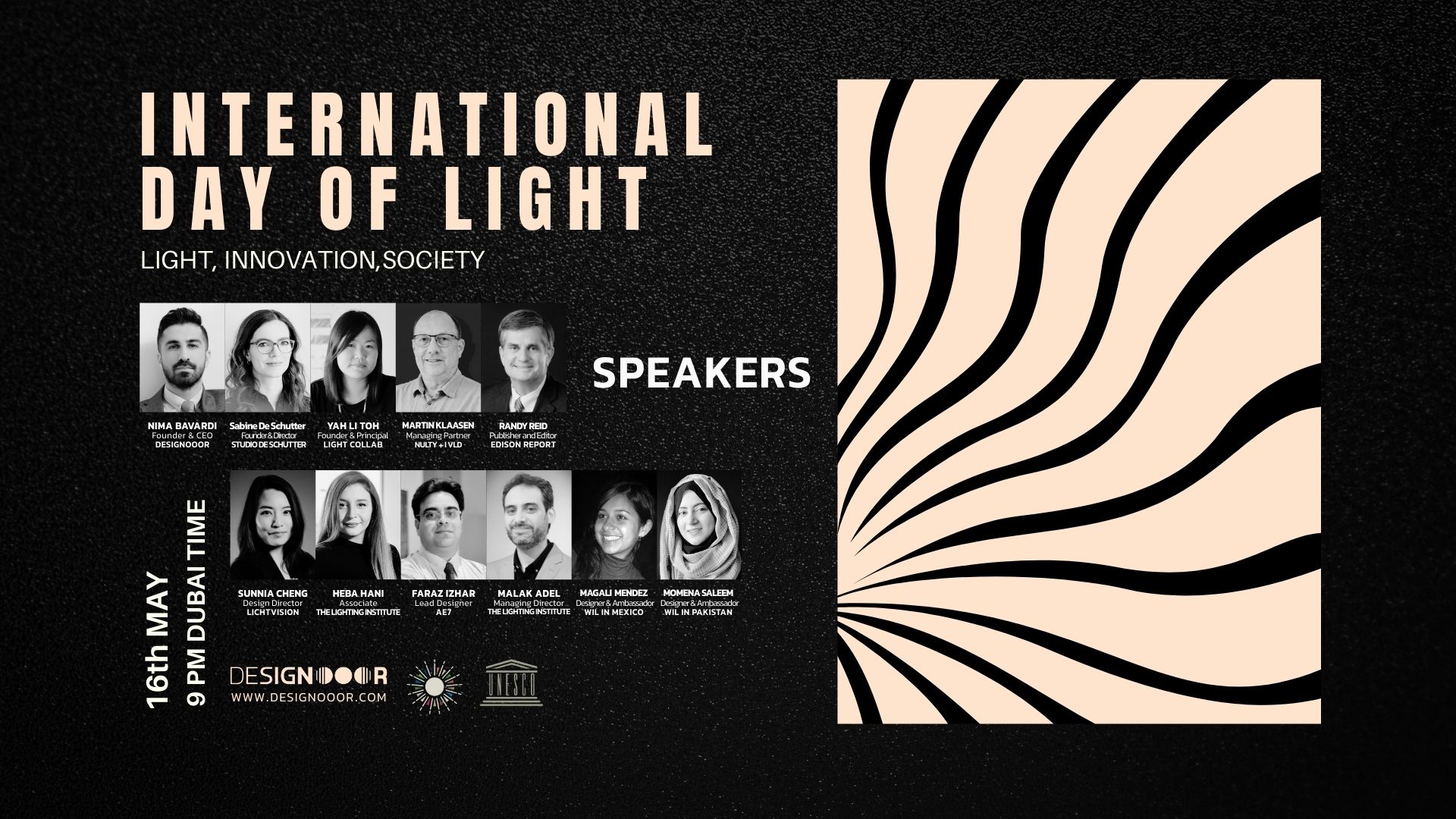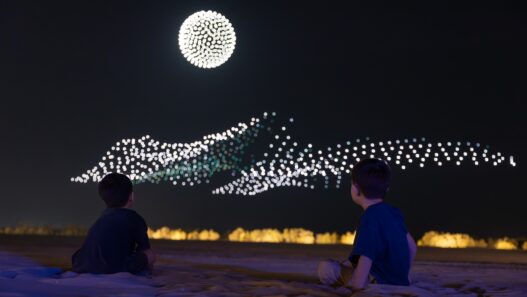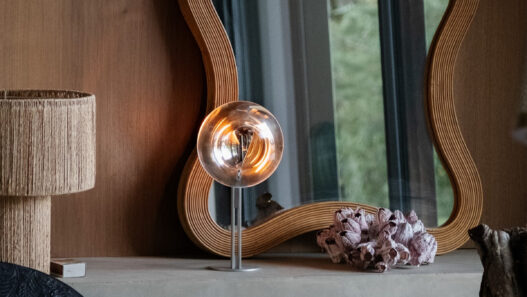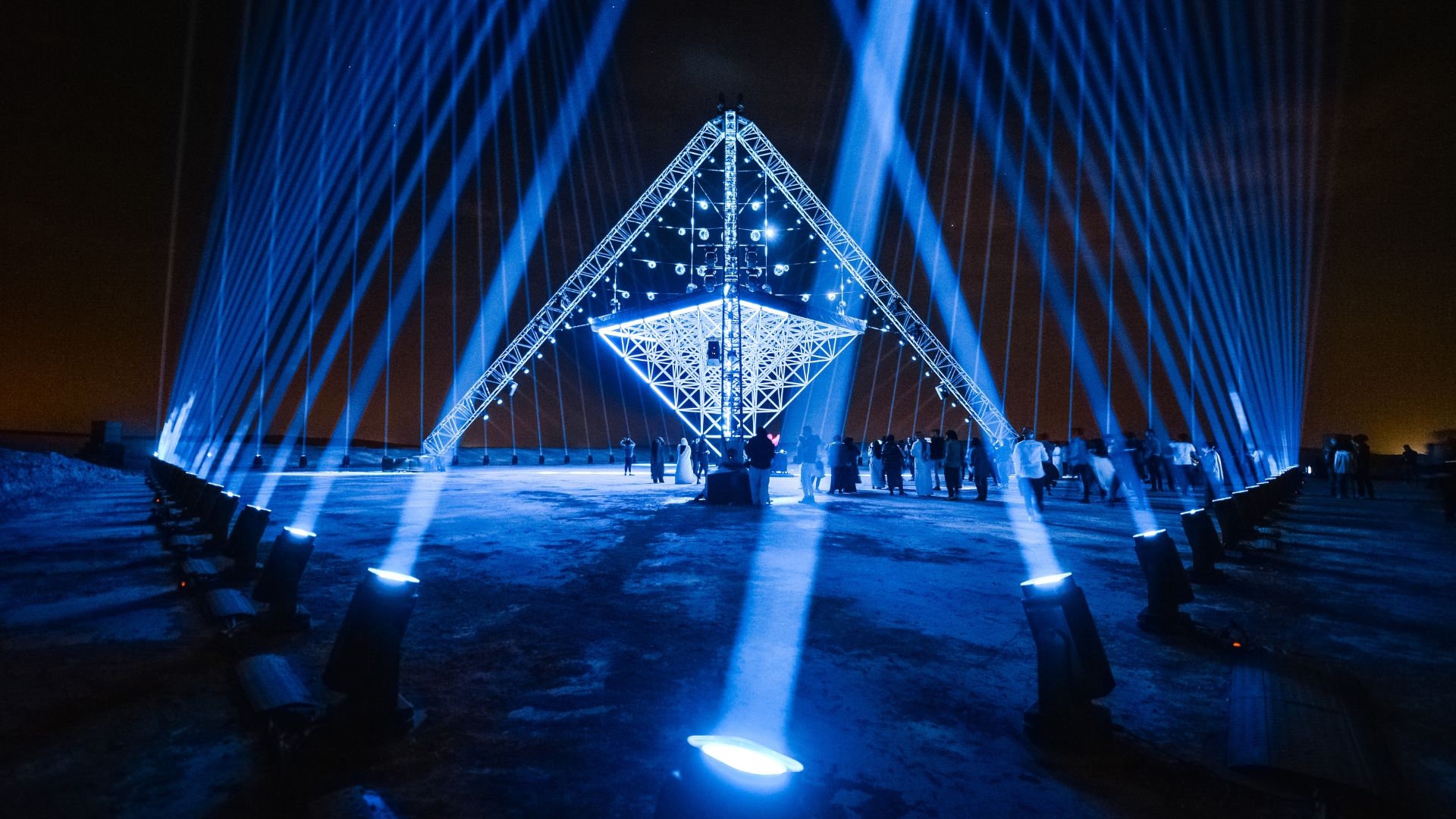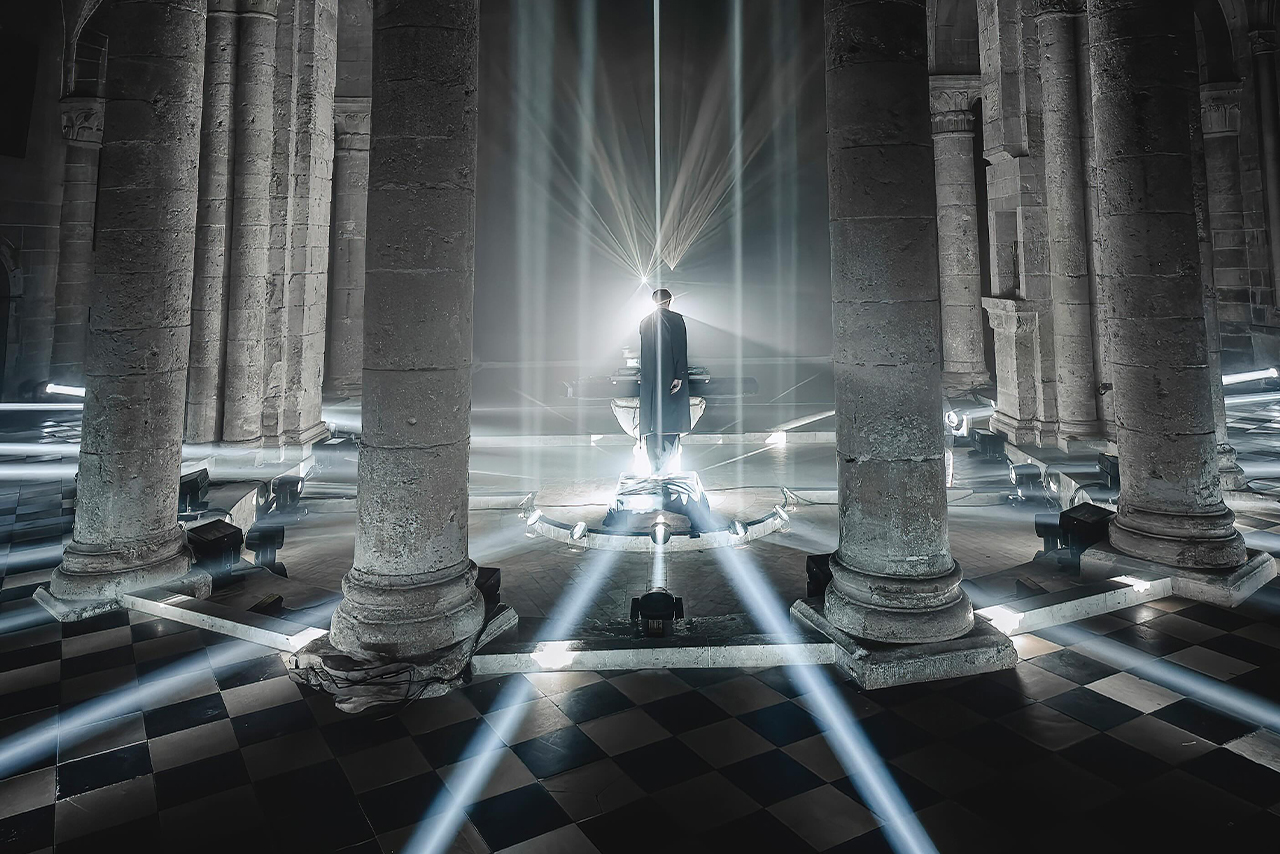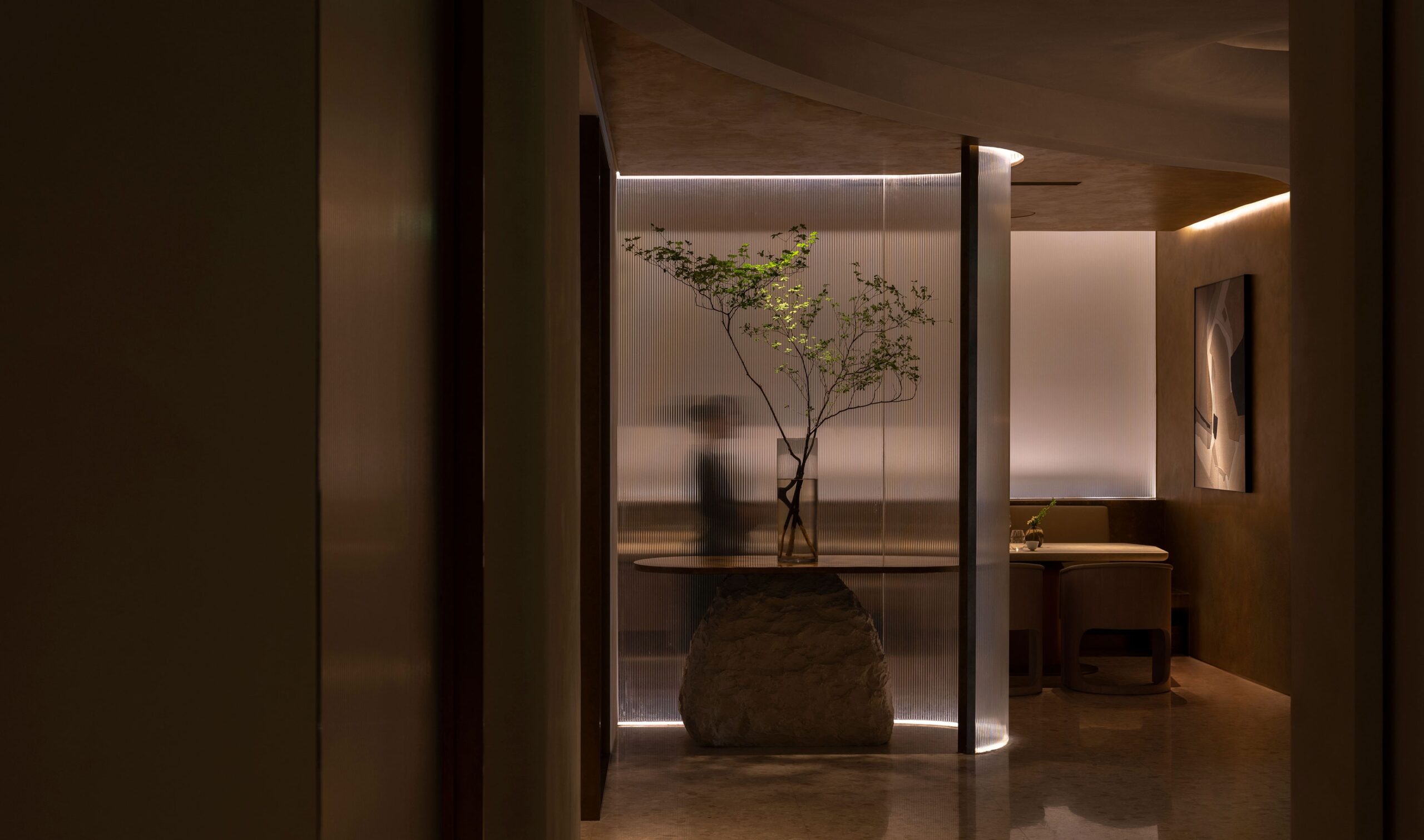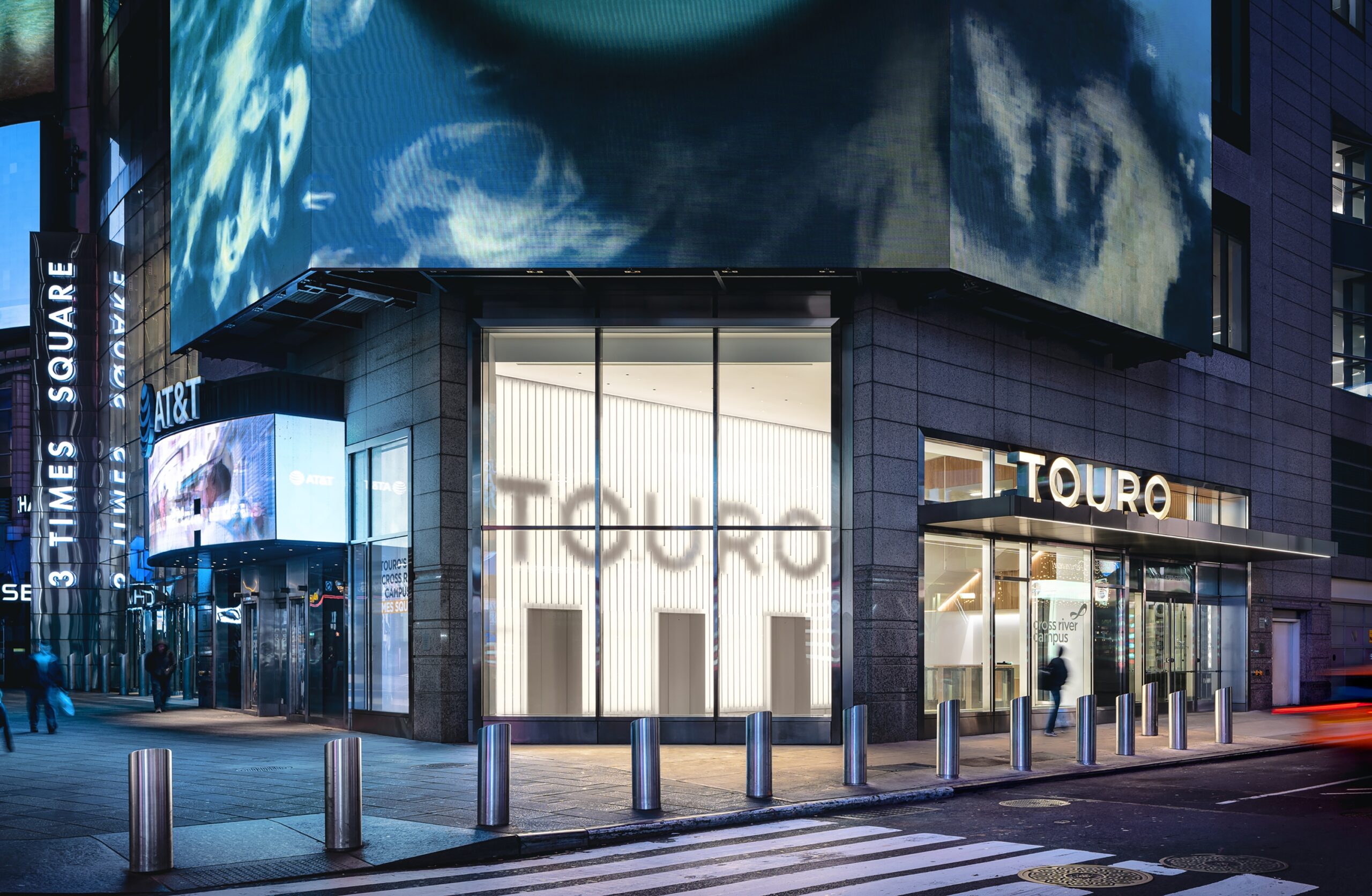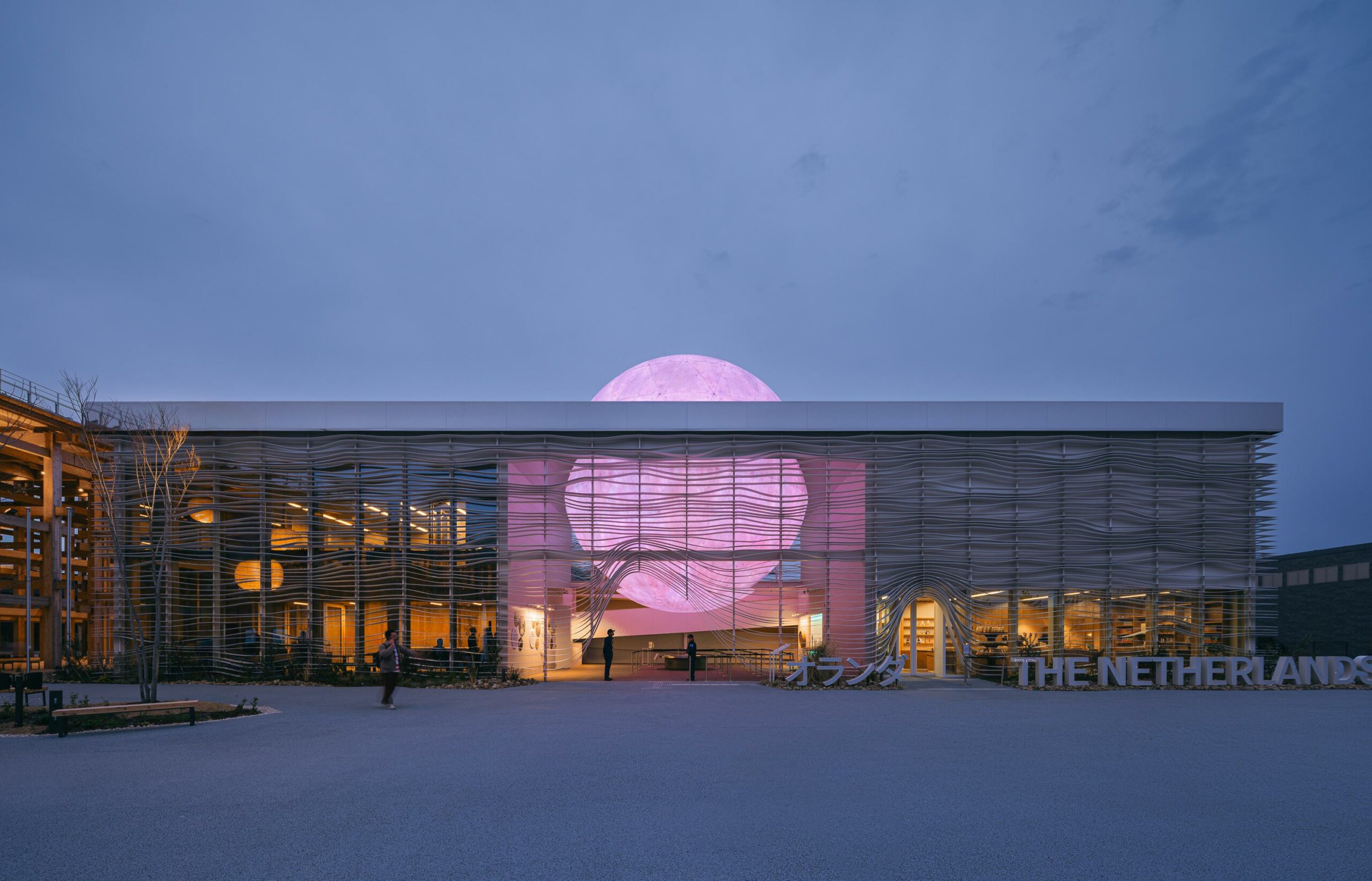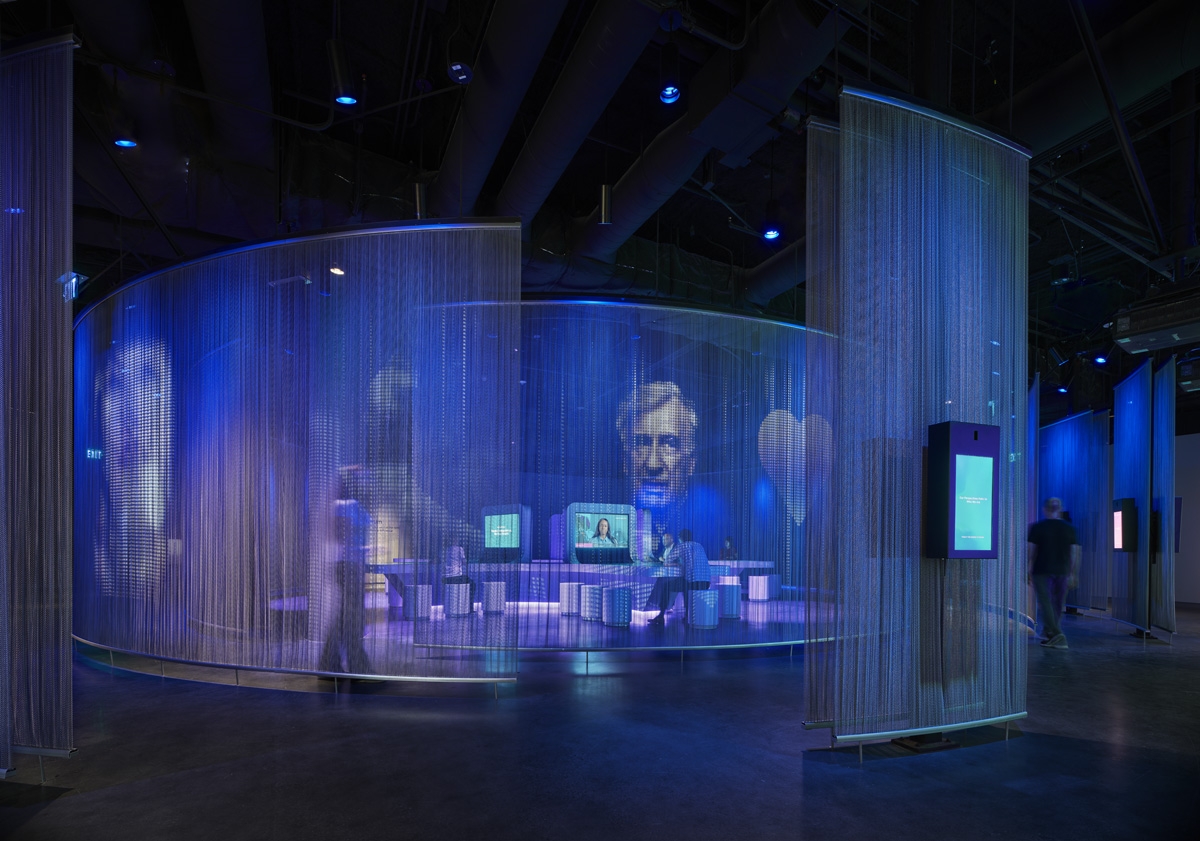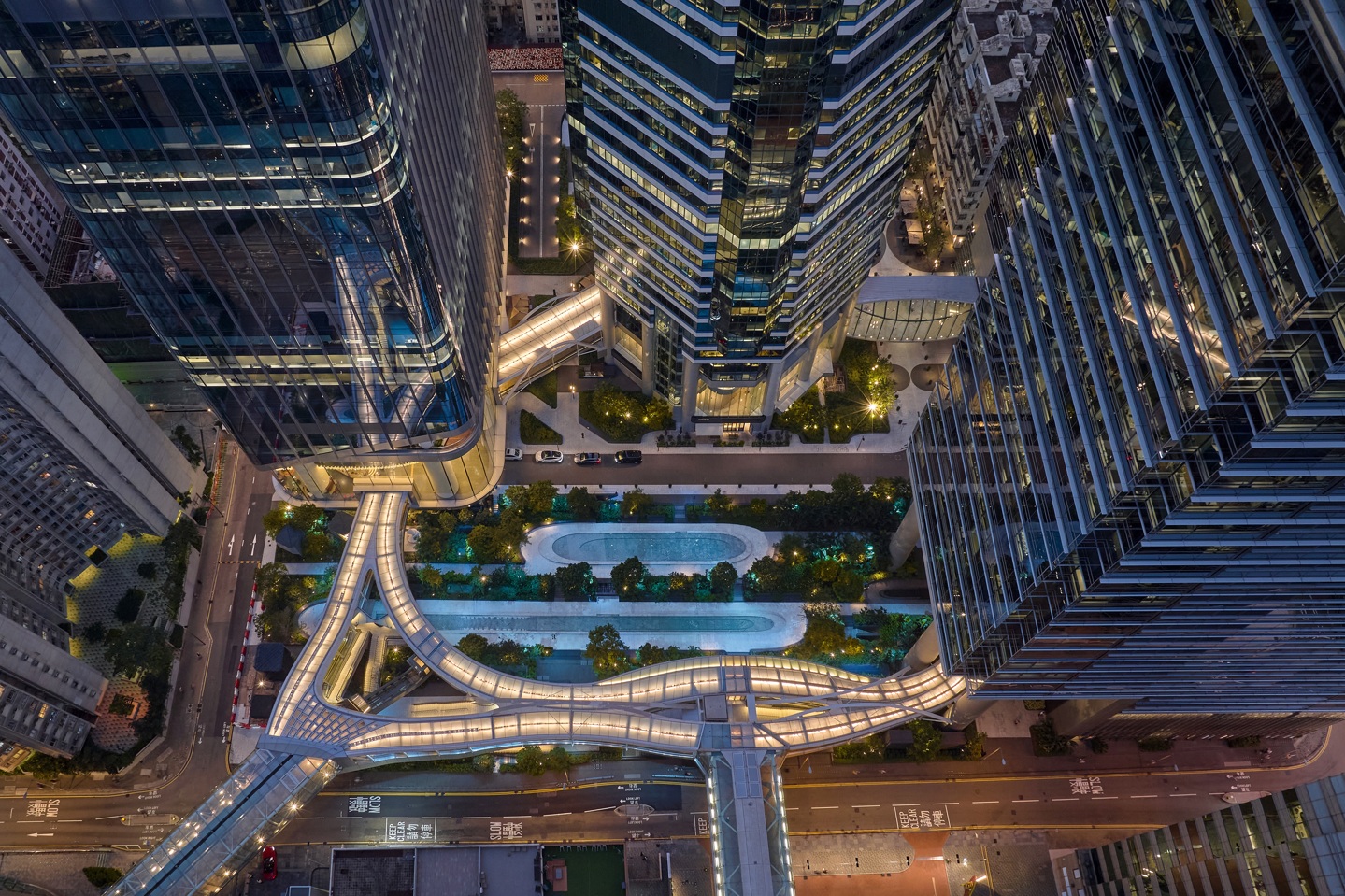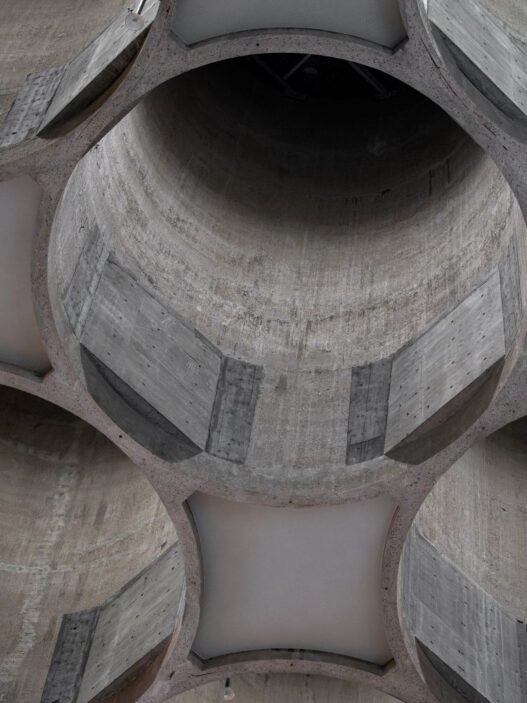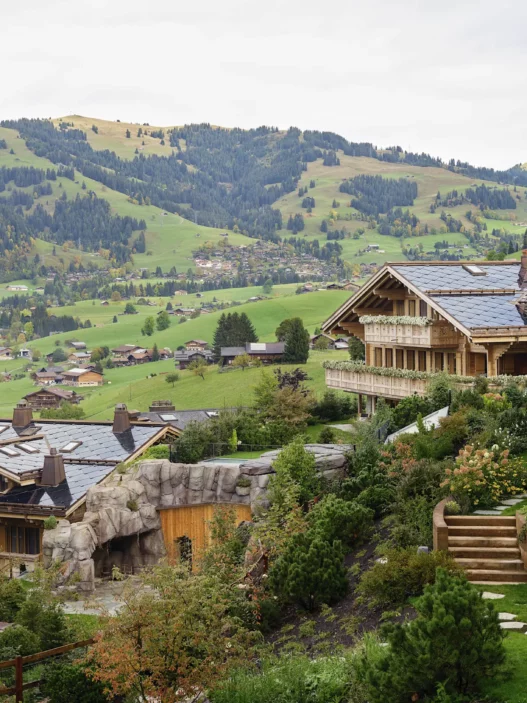When facing this colossal and unstable structure of light and geometry, the first question is whether its designer approached space with a mind shaped by quantum physics, or whether they were architecturally flung into a realm where scientific concepts merely serve as pretexts for unfolding a visual reverie. This installation, titled Axion, introduces itself not as a functional or purely decorative structure, but as a spatial hypothesis. As if a gigantic interstellar laboratory has descended into the night to invite humans to contemplate the unknown. Yet despite its mysterious and captivating appearance, the project is surprisingly self-aware; it doesn’t aim to answer anything. Instead, it formulates a visual question: If we cannot see dark matter, then what exactly are we seeing?
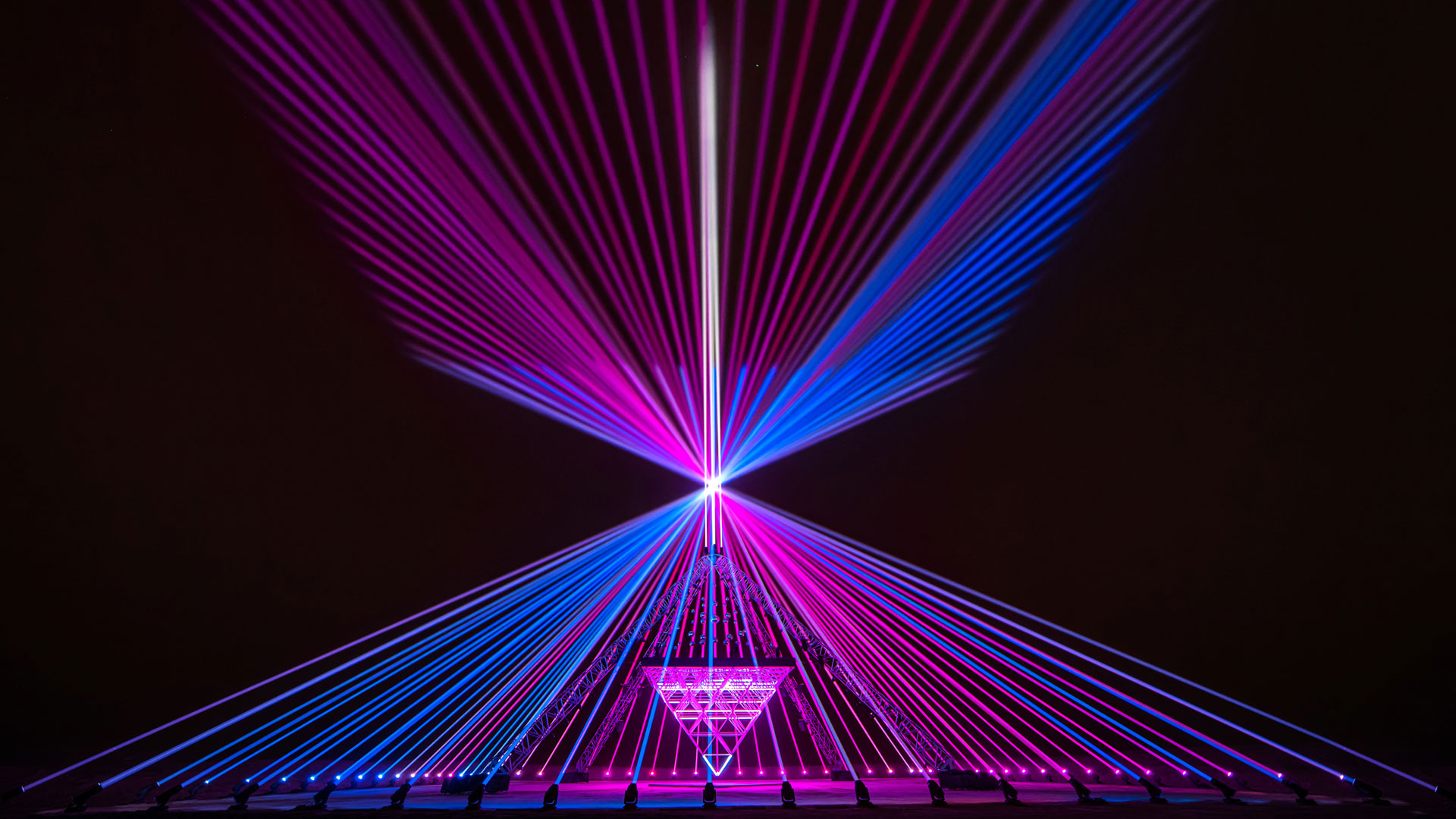
From a functional standpoint, the structure is far more than just a platform for nighttime illumination, it operates like a monumental machine for unveiling the invisible. The light mechanisms, meticulously orchestrated and yet somehow enchanted, are not designed merely to entertain but to orchestrate a quasi-scientific experience. One feels as though they’ve stepped into a chamber of astrophysical experimentation. Here, light is not just light, but data, signal, the echo of a possible collision between matter and antimatter. The laser grid mapped on the ground feels like gravitational lines, anchoring the observer at the center of an energy field, while the suspended central structure, with its recursive order, becomes a visual metaphor for a magnetic field. This work not only functions but elevates function into a narrative and that is its design strength.
The aesthetic of the project is not what first meets the eye. This is not about decorative tropes or current minimalist trends. It is instead a fusion of timeless architecture and scientific design that, curiously, echoes the mirrored halls of Kashan, not in form or geometry, but in that uncanny quality of reflection and disorientation. Like an Escher drawing where space folds and the mind hesitates, this structure both descends into night and transcends it. Here, light is no longer subject to space, it is its creator. And shadow? Shadow is absent. It is as if all that is dark has been folded into the concept of dark matter and removed from visibility. And this erasure is deliberate, a kind of absence more meaningful than presence.

As for stability, while technical durability may not have been the core aim, there is a deeper conceptual stability at play. This structure is made to be temporary, yet its imprint on the viewer’s mind is lasting. Its permanence lies in the fact that it reveals something that does not exist or at least, something unprovable. Amidst this crisis of meaning, the designer seems to have reached into the sky and pulled down a piece of the cosmos. Their inspiration is certainly not earthly structures but the radio telescopes that sit in the silence of deserts, attuned to the whispers of the universe. The closest visual and conceptual resemblance might be the FAST telescope in China, yet here, what is seen is not a reflection of signals, but a reflection of human imagination: a telescope gazing inward, not outward.
In sum, Axion is far more than a lighting installation, it is a metaphorical experience at the intersection of science and imagination. It does not seek beauty, nor pure function; it is one of those rare spaces designed to release the human into their own infinities. A “painting of light” on an architectural scale, and if I were to liken it to any artwork, perhaps it would be Kazimir Malevich’s Black Square a piece that shows nothing, yet from this very void, meaning is born. Axion is much the same: a vast silence of light, in the heart of darkness.
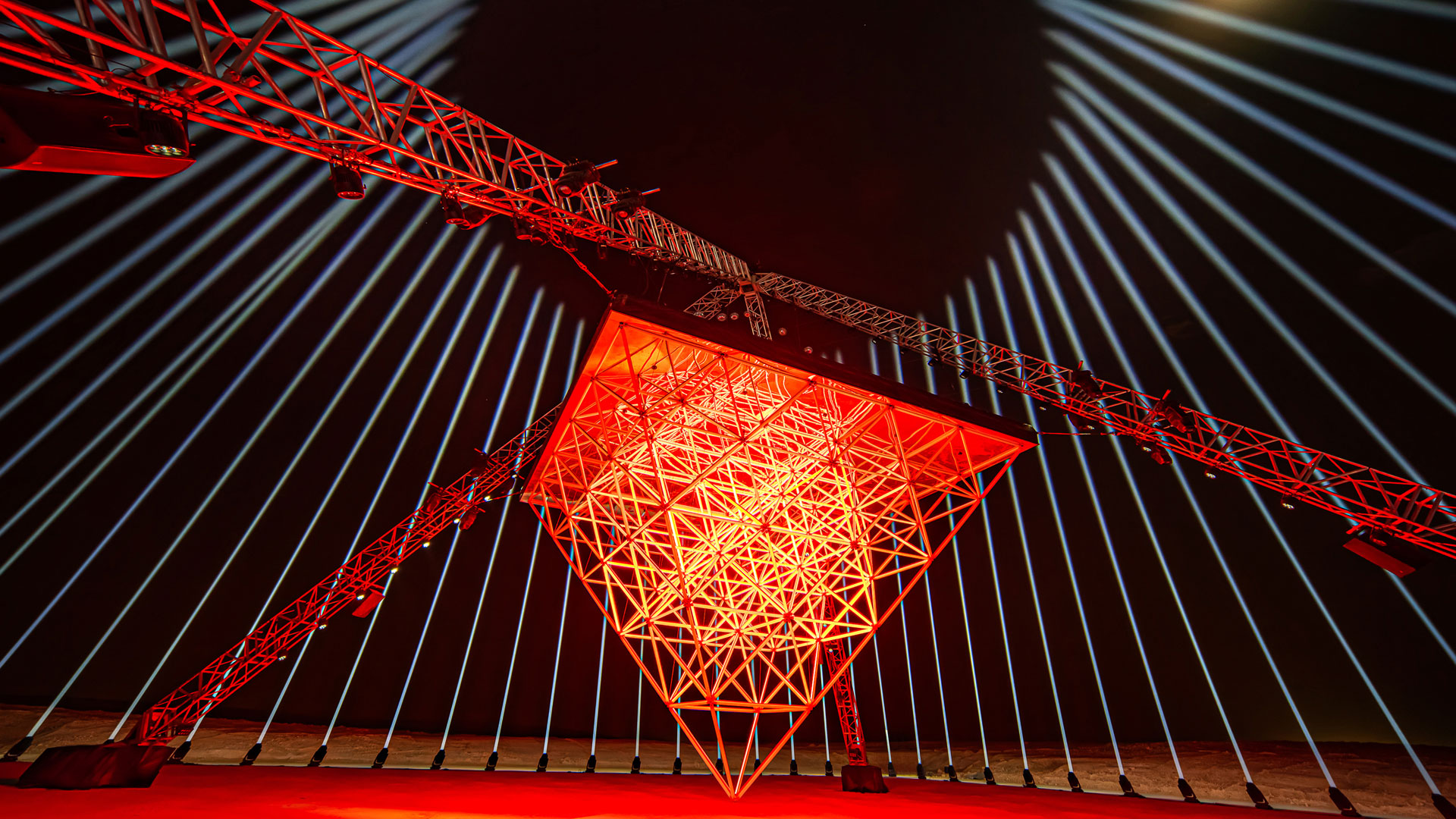
Brand : WHITEvoid GmbH
Designer : Christopher Bauder
Prize: LIT Lighting Design Award
